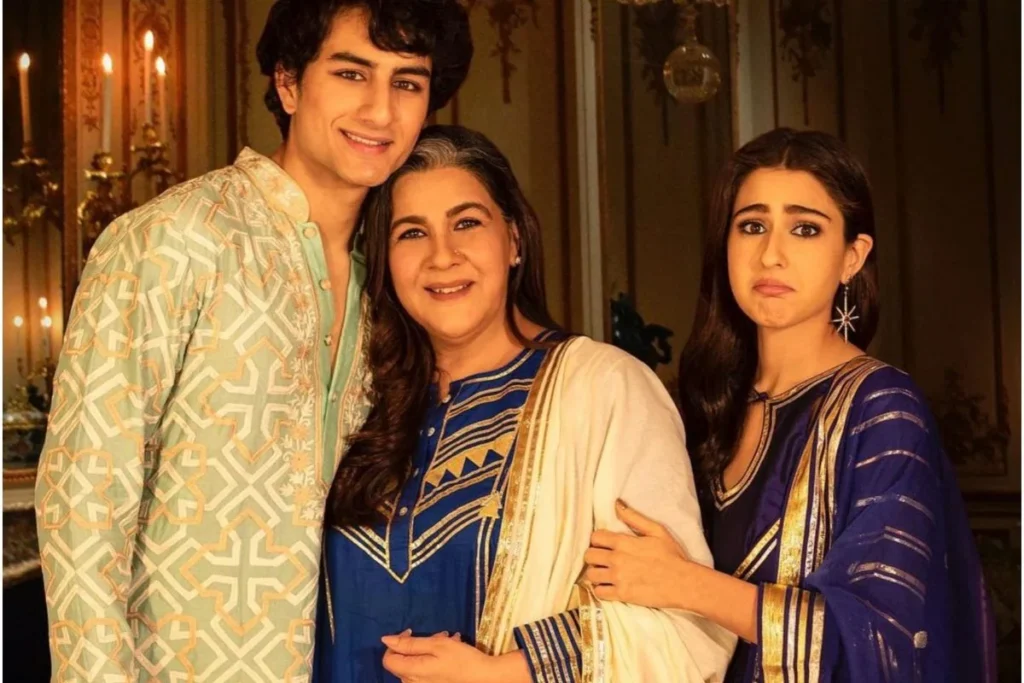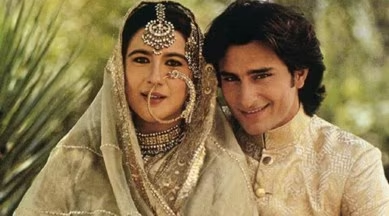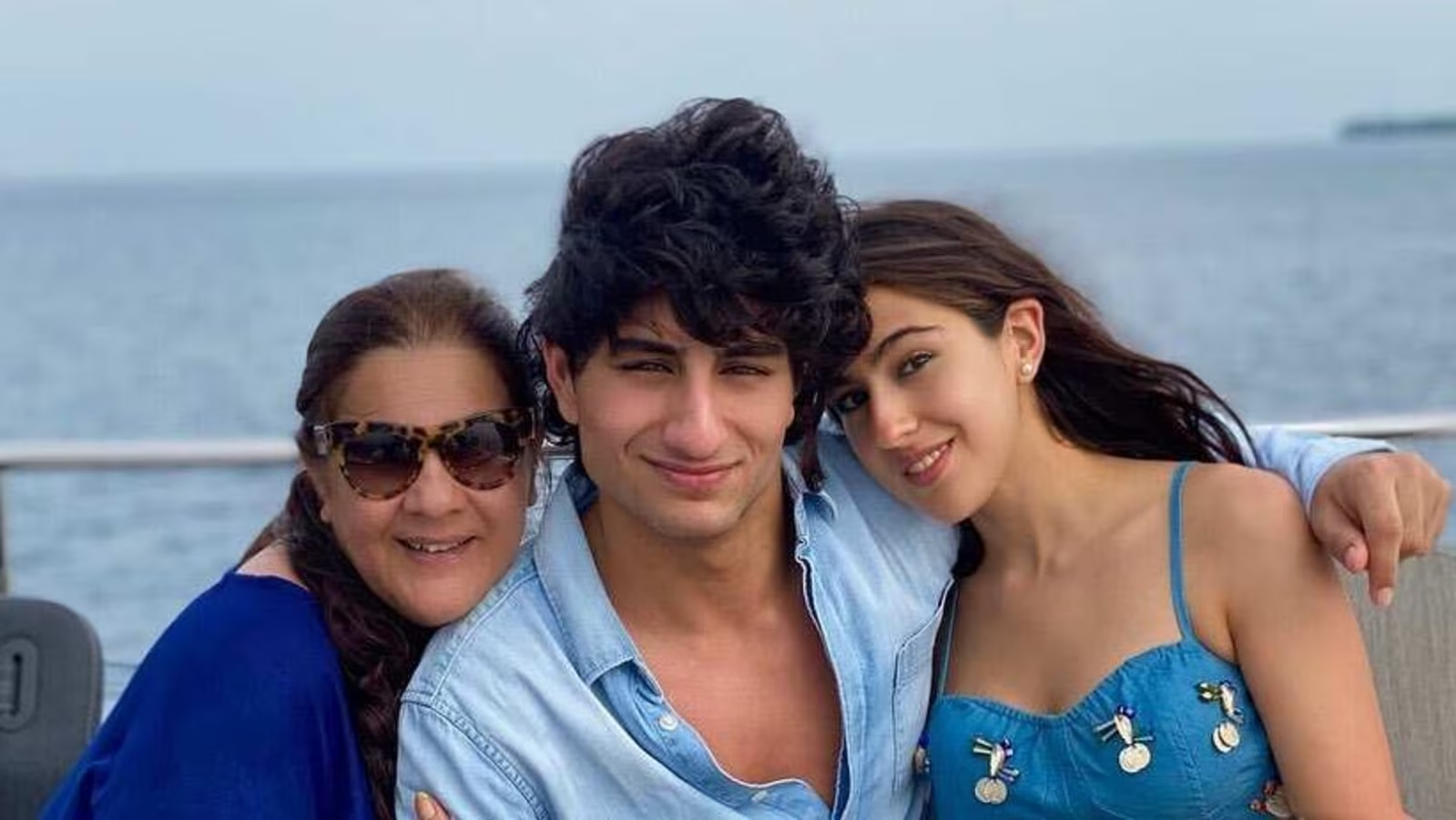Amrita Singh: The Timeless Star of Indian Cinema
Amrita Singh is one of the most renowned and beloved actresses in Indian cinema. Known for her versatile acting and captivating screen presence, she made a name for herself with her roles in both commercial and parallel cinema. From her debut in the early 1980s to her current roles, Amrita Singh has been a significant figure in Bollywood, combining beauty, talent, and resilience. Over the years, she has successfully navigated the complexities of the film industry and personal life, making her one of the most respected actresses of her generation.
This article delves into the life, career, and personal journey of Amrita Singh, exploring the milestones that have made her an enduring star in Indian cinema.
Amrita Singh : Early Life and Background
Amrita Singh was born on February 9, 1958, into an influential and aristocratic family in Punjab, India. Her father, Shivinder Singh, was a prominent army officer, and her mother, Rukhsana Sultana, was a socialite and political activist known for her controversial role during the Emergency in the 1970s. Amrita’s maternal grandmother was the sister of renowned novelist Khushwant Singh, giving her a lineage deeply rooted in both the military and intellectual spheres.
Growing up in an affluent environment, Amrita received her education at Modern School in New Delhi, one of the most prestigious schools in India. Despite her privileged background, Amrita was a grounded individual, known for her wit and charm. She was always interested in the performing arts, particularly acting, and this passion led her to the world of Bollywood.
Amrita’s Heritage: A Blend of Cultures

Amrita Singh’s heritage is a blend of Punjabi Sikh and Muslim cultures, which influenced her deeply as a person and an artist. Her mother, Rukhsana Sultana, played a significant role in shaping Amrita’s understanding of society, politics, and the arts. Amrita has often spoken about the dynamic upbringing she had, with strong women in her family being role models, which later reflected in her portrayal of fierce and independent women on screen.
Her dual heritage also helped her connect with a broad audience in India, where multiculturalism is a core aspect of the nation’s identity. Amrita’s roots enabled her to understand and portray a variety of characters from different backgrounds, contributing to her versatility as an actress.
Amrita Singh Bollywood Debut and Breakthrough
Amrita Singh made her Bollywood debut in 1983 with Betaab, opposite Sunny Deol. Directed by Rahul Rawail, the film was a huge commercial success and became one of the most popular films of the year. Amrita’s performance as the feisty and independent-minded Roma earned her rave reviews from critics and audiences alike. Her bold attitude, expressive eyes, and powerful dialogue delivery set her apart from other actresses of the time, marking the beginning of a successful film career.
Betaab established Amrita as a leading actress in the 1980s, and she was soon offered a series of prominent roles opposite major stars like Amitabh Bachchan, Sanjay Dutt, and Anil Kapoor. Her chemistry with her co-stars, especially with Sunny Deol, became a talking point, and she was hailed as one of the most promising newcomers in Bollywood.
Amrita Singh transition from Romantic Heroine to Versatile Actress
While Betaab showcased Amrita as a romantic heroine, she soon proved her versatility by taking on a variety of roles in different genres. In the early phase of her career, Amrita worked in both commercial blockbusters and films with serious themes, displaying her ability to adapt to diverse roles.
In films like Mard (1985), where she starred opposite Amitabh Bachchan, Amrita played a strong-willed woman who holds her own in a male-dominated narrative. Her role in Chameli Ki Shaadi (1986), a satirical comedy, showcased her impeccable comic timing and willingness to experiment with offbeat roles. Amrita’s ability to shift seamlessly from drama to comedy made her one of the most sought-after actresses of the decade.
Amrita Singh Iconic Roles and Memorable Films
Amrita Singh’s filmography is dotted with iconic performances that have left a lasting impact on Indian cinema. Her roles in some of the most memorable films of the 1980s and 1990s have solidified her position as a versatile and talented actress.

Chameli Ki Shaadi (1986)
One of Amrita Singh’s most cherished roles came in Chameli Ki Shaadi, where she played the titular character, Chameli. Directed by Basu Chatterjee, the film was a lighthearted romantic comedy that explored societal norms, arranged marriages, and the idea of love beyond class boundaries. Amrita’s portrayal of Chameli, a simple yet headstrong girl, resonated with audiences. The film was a critical and commercial success, and Amrita’s comedic flair was widely praised.
Mard (1985)
Another significant film in Amrita’s career was Mard, where she played the female lead opposite the legendary Amitabh Bachchan. Directed by Manmohan Desai, Mard was an action-packed drama that revolved around themes of patriotism and valor. Amrita’s role in the film was crucial, as she played a courageous woman who supports the hero in his quest to fight injustice. The film was a massive hit at the box office, further cementing Amrita’s status as a leading actress.
Rang (1993)
Amrita Singh’s performance in Rang, a romantic drama co-starring Kamal Sadanah, was another highlight of her career. The film explored the complexities of love, jealousy, and relationships. Amrita’s character, who navigates the emotional turmoil between love and betrayal, was praised for its depth and realism. Rang became a box office success and remains one of Amrita’s most remembered films from the 1990s.
A Shift in Career: Supporting Roles and Reinvention
As the 1990s progressed, Bollywood witnessed a shift in the type of films being made, and with the advent of younger actresses, Amrita Singh began to transition from playing the female lead to more character-driven roles. However, instead of fading away, Amrita embraced this change and reinvented herself by taking on mature and supporting roles, showcasing her acting prowess in a different light.
In 2002, Amrita made a notable comeback in 23rd March 1931: Shaheed, where she played the role of Vidyavati, the mother of Indian freedom fighter Bhagat Singh. This role marked a turning point in her career, as she began to take on more mature characters that highlighted her emotional depth and range as an actress.
Kalyug (2005)
Amrita Singh’s role in the 2005 film Kalyug was another standout performance in her second innings. Directed by Mohit Suri, the film was a gritty and intense drama that dealt with the dark underbelly of the adult film industry. Amrita played the antagonist in the film, a ruthless and manipulative woman who controls a vast porn empire. Her portrayal of a cold and calculating villain was chilling and earned her critical acclaim. The film’s success brought Amrita back into the limelight, and her performance was hailed as one of the best negative roles by an actress in contemporary Bollywood.
Shootout at Lokhandwala (2007)
In Shootout at Lokhandwala, Amrita Singh took on the role of a tough and resilient mother who is caught in the crossfire of the infamous police encounter that took place in Mumbai in the 1990s. Her character, Ayesha Azeem, was a departure from her earlier glamorous roles, and she convincingly portrayed a woman dealing with tragedy and survival in a violent world. Amrita’s performance was widely appreciated, and the film was a commercial hit.
Amrita Singh Personal Life: Love, Marriage, and Motherhood

Amrita Singh’s personal life has often been the subject of media scrutiny, particularly her high-profile marriage to actor Saif Ali Khan. The two actors met in the early 1990s and fell in love, despite the significant age difference between them. Saif, the son of actress Sharmila Tagore and cricketer Mansoor Ali Khan Pataudi, was 12 years younger than Amrita. Their relationship raised many eyebrows, but the couple was unfazed by the criticism.
Marriage to Saif Ali Khan
Amrita Singh and Saif Ali Khan got married in 1991, in a private ceremony attended by close friends and family. The marriage was considered unconventional at the time due to the age difference and their different religious backgrounds. However, the couple seemed deeply in love and had two children together – a daughter, Sara Ali Khan, and a son, Ibrahim Ali Khan.
During her marriage to Saif, Amrita took a step back from her acting career to focus on her family. She became a full-time mother and supported Saif in his career. However, their marriage faced challenges, and the couple eventually divorced in 2004 after 13 years of being together.
Amrita Singh Life After Divorce
After her divorce from Saif Ali Khan, Amrita Singh made a conscious effort to stay away from the limelight, focusing instead on raising her children. She has often spoken about the challenges of being a single mother in the film industry but has always prioritized her children over her career. Her daughter, Sara Ali Khan, followed in her footsteps and made her Bollywood debut in 2018, while her son, Ibrahim, is still pursuing his studies but is rumored to have acting aspirations as well.
Despite the ups and downs in her personal life, Amrita has always maintained her dignity and grace, handling the media attention with poise.
Amrita Singh : Legacy and Influence in Bollywood
Amrita Singh’s legacy in Bollywood is defined by her ability to evolve as an actress across decades and genres. From her early days as a leading lady in romantic films to her later roles in gritty dramas and antagonistic characters, she has shown remarkable range and depth. She was one of the few actresses who managed to transition seamlessly from playing glamorous roles in the 1980s to more character-driven parts in her later years, all while maintaining a consistent presence in the industry.
One of the key aspects of Amrita Singh’s influence in Bollywood is her versatility. She was not confined to a particular genre or role, and her willingness to experiment with both commercial and parallel cinema made her stand out among her peers. Her early career was defined by her success in romantic and comedic films, but it is her later work in more serious and mature roles that truly showcased her acting talent.
Breaking Stereotypes
Throughout her career, Amrita has been known for breaking stereotypes, whether it was her decision to marry someone younger than her, or the roles she chose to take on in her later years. In an industry where female actors often find themselves sidelined after marriage or reaching a certain age, Amrita defied the norms by continuing to take on challenging roles well into her 40s and 50s.
Her role as the antagonist in Kalyug was a bold move, as female villains were not common in Bollywood at the time. Her portrayal of a cold and ruthless character shattered the traditional image of women in Hindi cinema. Similarly, her role in Shootout at Lokhandwala and 23rd March 1931: Shaheed proved that she could handle roles with emotional complexity and intensity.
Mentorship and the Next Generation

As a mother of two aspiring actors, Sara Ali Khan and Ibrahim Ali Khan, Amrita has become an important figure in shaping the next generation of Bollywood stars. Sara Ali Khan, who has quickly risen to fame after her debut in 2018 with Kedarnath, has often spoken about how her mother’s influence and guidance have been crucial in her career. Amrita’s experiences in the industry, both the highs and lows, have provided invaluable lessons for her children as they navigate the complex world of Bollywood.
Although she has largely stayed out of the limelight since her children entered the film industry, Amrita Singh’s presence is still felt in the way she has supported and mentored her daughter. Her grounded nature and no-nonsense attitude towards fame have clearly rubbed off on Sara, who has often been praised for her candid and humble approach in interviews and public appearances.
Amrita Singh : Awards and Accolades
Despite her long and successful career, Amrita Singh has been somewhat underrated in terms of awards and recognition. However, her performances have been consistently lauded by critics and audiences alike. Over the years, Amrita has received several awards and nominations for her work in films.
Recognition for Supporting Roles
One of the key highlights of Amrita’s later career was her ability to shine in supporting roles. In Kalyug, her portrayal of the villainous character earned her critical acclaim, with many calling it one of the best performances of her career. Although she did not win major awards for the film, her performance was widely praised as a standout in an otherwise male-dominated narrative.
Her role in Shootout at Lokhandwala also garnered appreciation, showcasing her ability to play a mother caught in tragic circumstances with emotional depth and nuance.
Long-Standing Appeal
Despite not always receiving the recognition she deserved from award bodies, Amrita Singh’s appeal lies in her lasting impact on audiences. She continues to be remembered for her iconic roles from the 1980s, such as in Betaab and Chameli Ki Shaadi, which remain cult classics to this day. The fact that she has been able to reinvent herself multiple times over her career is a testament to her talent and longevity in the industry.
Amrita Singh: A Woman of Resilience and Strength
One of the most remarkable aspects of Amrita Singh’s journey in Bollywood is her personal resilience. In an industry that is notorious for being unforgiving, especially to women as they age or face personal challenges, Amrita has stood tall. Her decision to step away from her career at the peak of her success to focus on her family, and then make a successful comeback later, speaks volumes about her priorities and strength of character.
Her personal life, particularly her marriage and divorce from Saif Ali Khan, was subject to intense media scrutiny. However, Amrita has always maintained her dignity and refrained from engaging in public controversies. She has spoken about the difficulties of being a single mother in the film industry but has always put her children’s well-being first, which has earned her respect both within and outside Bollywood.
Balancing Work and Family
For Amrita Singh, her family has always been a top priority. After her divorce, she dedicated herself to raising Sara and Ibrahim, often staying away from the limelight to ensure her children had a stable upbringing. Despite the demands of the film industry, Amrita managed to strike a balance between her professional life and motherhood. Her close bond with her children is evident in the way they speak about her, with Sara Ali Khan often calling her mother her biggest inspiration and support system.
Amrita’s decision to take on selective roles after her comeback allowed her to spend quality time with her family while also continuing her passion for acting. Her focus on family and personal values has made her a role model for many women in the film industry, who look up to her for her strength and resilience.
The Evolution of Amrita Singh’s Career: A Look at Her Roles Over the Years

Amrita Singh’s career has been a fascinating journey of evolution, from the bubbly and vibrant young actress of the 1980s to the seasoned and confident performer in the 2000s. Her ability to adapt to the changing trends of Bollywood and take on diverse roles has ensured her relevance in an industry that is constantly in flux.
1980s: The Romantic Heroine
Amrita Singh’s early career in the 1980s was defined by her roles as a romantic heroine. Films like Betaab and Mard showcased her as a fresh face in Bollywood, full of energy and charisma. Her on-screen chemistry with leading men like Sunny Deol and Amitabh Bachchan became the talk of the town, and she quickly became one of the most popular actresses of the decade.
During this period, Amrita was known for her strong screen presence and ability to hold her own in male-centric films. While many of her contemporaries were limited to playing the damsel in distress, Amrita’s characters were often more empowered and vocal, a reflection of her own personality.
1990s: Experimentation and Transition
The 1990s marked a period of experimentation for Amrita Singh as she started taking on more character-driven roles. As Bollywood transitioned into a new era with the rise of younger stars and more glamorous roles, Amrita adapted by playing more mature characters that showcased her acting skills.
Films like Rang and Aaina allowed her to explore different shades of human emotions, from jealousy and insecurity to love and sacrifice. While her contemporaries struggled to keep up with the changing trends, Amrita successfully transitioned into roles that required more depth and nuance.
2000s and Beyond: Reinvention and Comeback
After taking a break from acting to focus on her family, Amrita Singh made a strong comeback in the 2000s. Her role in Kalyug as the antagonist showed a new side of her acting talent, as she played a character completely different from her earlier roles. This reinvention marked a new chapter in her career, where she embraced more challenging and unconventional roles.
Her performances in films like Shootout at Lokhandwala and Aurangzeb further solidified her reputation as an actress capable of delivering powerful performances in supporting roles. Amrita’s willingness to experiment with her roles, even later in her career, has made her one of the most enduring and respected actresses in Bollywood.
Conclusion: Amrita Singh’s Enduring Legacy in Indian Cinema
Amrita Singh’s journey in Bollywood is a testament to her versatility, resilience, and passion for acting. From her debut in the early 1980s to her memorable performances in the 2000s, she has continually reinvented herself and adapted to the ever-changing landscape of Indian cinema. Whether as a romantic lead, a comic genius, a dramatic performer, or a villain, Amrita has always left an indelible mark with her performances.
Her personal life, marked by highs and lows, has also shaped the way she is perceived by the public. Despite facing challenges, including a highly publicized divorce and the responsibilities of being a single mother, Amrita has remained grounded and dignified, prioritizing her family and personal values.
As a role model for future generations of actresses, including her daughter Sara Ali Khan, Amrita Singh’s contribution to Indian cinema will continue to inspire and influence. Her legacy is not just in the roles she has played, but in the strength, grace, and determination she has shown throughout her life. Amrita Singh is, and always will be, a timeless star of Indian cinema.
Read about Indian Hockey team captain Harmanpreet singh here.



